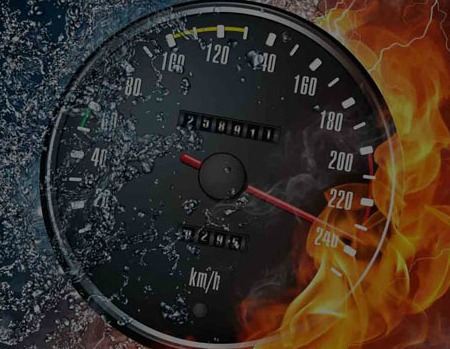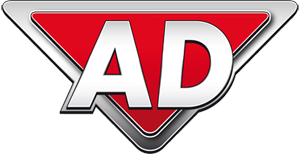DPF REMOVAL

A DPF (Diesel Particulate Filter) also known as FAP on some French vehicles, is a device fitted to the exhaust system of modern diesel vehicles to reduce emissions and meet European emission standards.
WHAT IS A DPF?
A DPF (Diesel Particulate Filter) also known as FAP on some French vehicles, is a device fitted to the exhaust system of modern diesel vehicles to reduce emissions and meet European emission standards. It does this by trapping Soot (Particulate Matter - PM) from the exhaust gasses while letting the gasses flow through the system.
As with any type of filter a Particulate Filter needs to be cleaned regularly to function properly. With DPF’s this is done by a process known as Regeneration which involves a combination of a Catalyst function in the system and burning the soot to gas at a very high temperature leaving behind an Ash residue within the DPF. Regeneration should be an automatic process taking place in the normal use of your vehicle, you may have noticed this in the form of a blast of white smoke form the exhaust on occasions.
DPFs have been in common use in passenger cars and light commercials from around 2003 in preparation for Euro 4 regs (2005), with Peugeot, Renault and BMW being early takers. Euro 5 (2009) made it compulsory for diesel cars and light commercials to have a DPF fitted and Euro 6 2014 will tighten this up further.
PROBLEMS ENCOUNTERED WITH DPF
If regeneration doesn’t function properly it leads to a build up of soot affecting performance and fuel economy, left unattended this will result in a Blocked DPF which can ultimately cause very expensive damage to other engine components. A blocked DPF is also potentially dangerous as it can cause overheating in the exhaust system and cause a fire risk. To prevent this damage most newer vehicles will go into “Limp Home” safety mode at this stage, meaning the vehicle will have minimum power barely sufficient to crawl home. For regeneration to take place it requires the vehicle to be driven regularly at some speed on open roads e.g. motorway driving, typically driving at around 2500 RPM for approx 30mins at least once a month, this will keep things working. However, many diesel vehicles are used primarily in urban areas or on short stop start journeys e.g. local deliveries, taxi’s, school runs etc and many have auto gearbox, so the vehicle does not get the chance to heat up sufficiently and is unable to carry out a full regeneration process.
Even if the regeneration functions as it should, over time the Ash Residue will build up in the DPF and have the same affect ultimately resulting in a blocked DPF. For this reason a DPF is classified as a Serviceable Item by the vehicle manufacturers like brake pads or air filters etc and not covered under warranty. DPF systems therefore need to be maintained properly.
WHAT ARE MY OPTIONS?
If your DPF warning light or Anti-Pollution warning is on, please do not ignore it (typical dash warning symbols below). Get professional advice, consider your options carefully and attend to the problem. Leaving it will ultimately cost you much more in additional repair bills and it can be dangerous.
By the time your DPF warning lights are visible your DPF will already be significantly blocked. Forced regeneration by a garage or a “blast down the motorway” is not likely to cure the problem, these only work as preventative maintenance. So at this stage realistically you have the following 3 options:-
DPF Replacement – Quantum dealers can replace the DPF at a fraction of the main dealer cost. They carry out full diagnostic checks, replace the DPF unit, recalibrate the ECU, reset the warning lights and run a road test. They can also add a bespoke remap at the same time to improve fuel economy and performance, ask about our special discount package.
The ideal DPF solution for you depends on your circumstances e.g. type & condition of your vehicle, your usage, your future plans i.e. whether you intend to keep or sell the vehicle etc and your budget.
WHAT ELSE SHOULD I BE AWARE OF?
It is often said that you should “go for a blast” down the motorway to clear the DPF. Please note this is only partially true. If the DPF is blocked beyond the capacity for regeneration or blocked due to Ash residue, you will do more harm to your engine.
There are many DPF cleaning additives available promising a magic cure for DPF. We have yet to find one that will clear a blocked filter and will certainly not clear an Ash blocked filter. Some products can however be useful in keeping a functional DPF in good health.
DPF units are closely linked with other emissions components, if these parts do not function properly they can help to block the DPF, similarly a blocked DPF can damage these components due to excess back pressure.
DPF units are located close to the Turbo, if the turbo is leaking oil it can help to block the DPF, similarly a blocked DPF can damage the turbo due to excess back pressure.
Some PSA engines fitted to Peugeot, Renault, Ford, Volvo and Nissan have an on board Fuel Additive System connected to the DPF to help regeneration. It is importantto maintain this system and keep it topped up with the additive (only available from main dealers approx £130 per tank) if not it will block the DPF. In our experience this is often neglected, even by main dealers due to the cost.
Some vehicles have a dedicated DPF or Emissions or Anti-Pollution warning light which is great, however many will just have an Engine light on. It is important to check by diagnostics why the light is on and not advisable to simply get the light turned off without investigation.
DPF work is complex and should only be carried out by experienced professionals with the correct specialist equipment. All work on a DPF has to be completed with the appropriate recalibration or reset on the vehicle ECU. It is not possible to simply delete the DPF electronically or just remove the DPF unit without work on the ECU.
It is our experience that many garages including main dealers are not knowledgeable in DPF and related issues. Our dealers often see customers after they have spent a lot of money on the wrong fixes as the DPF fault was not correctly diagnosed. Diesel Particulate Filters were designed with good intent to reduce emissions and offer a better environment. In theory a DPF would trap soot in urban areas and then regenerate on the open road, unfortunately this does not always work well leading to expensive repairs. The fact that DPF units are made with expensive minerals like Platinum, that excess fuel is needed for the regeneration process and that ultimately the accumulated soot and ash has to go somewhere… back into the environment which many now question the overall environmental value of the entire life cycle.
IS DPF REMOVAL LEGAL?
It is not illegal to remove the DPF, however in the UK it is an offence to use a vehicle on the road that no longer complies with the emissions standards it was designed to meet.
Changing any part of the exhaust or emissions system with a part other than the vehicle manufacturer’s original part that may change the emissions could be an offence. Currently emissions testing outside the London Emissions Zone (LEZ) is limited to the standard MOT test.
From February 2014 the inspection of the exhaust system carried out during the MOT will include a visual check for the presence of a DPF canister, if fitted as standard equipment.
QUANTUM TUNING DPF SERVICE
It is the consumer’s decision if they wish to have the DPF Solution.
Furthermore, the MOT testing criteria is constantly changing so there is potential in future that you may be required to install a new filter? If this is the case your Quantum dealer can remove the DPF deletion software.


